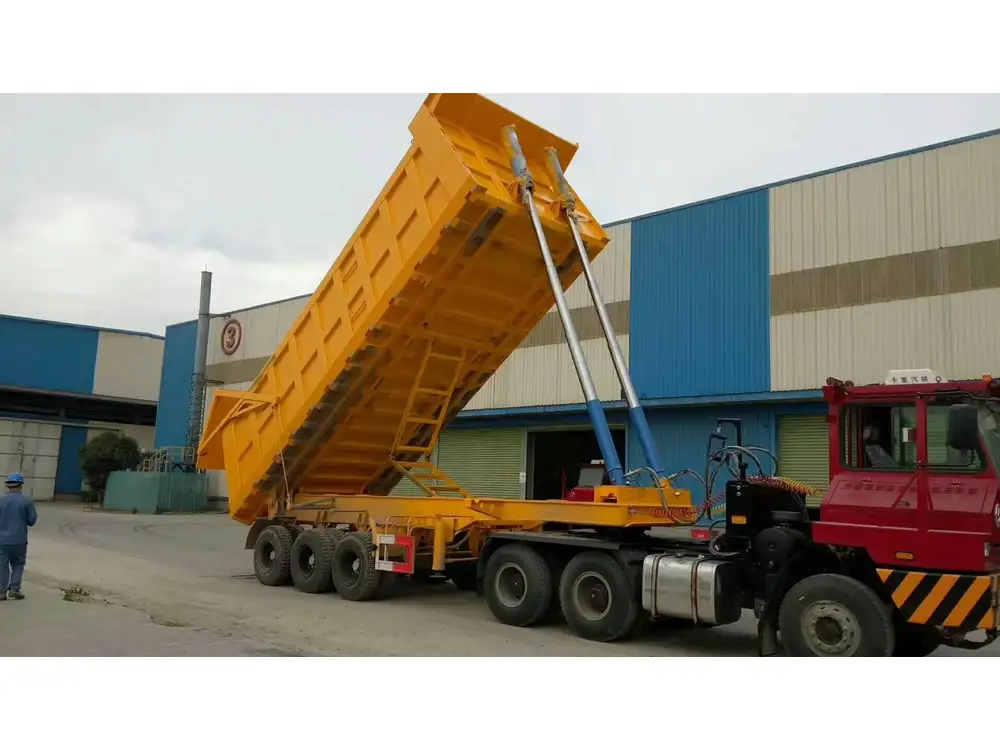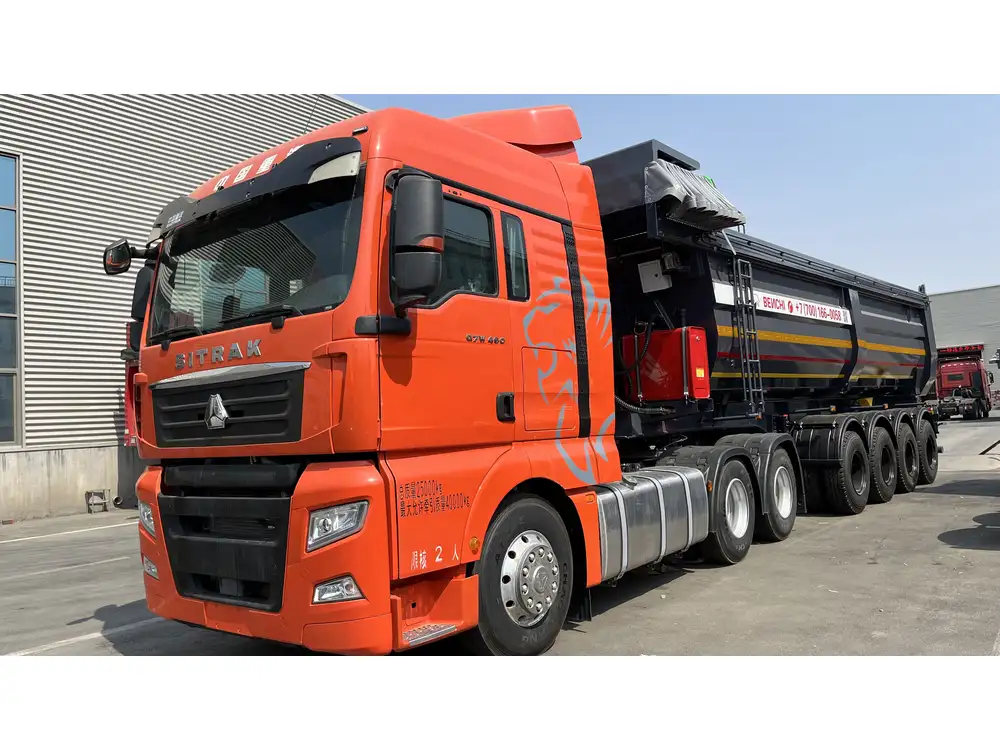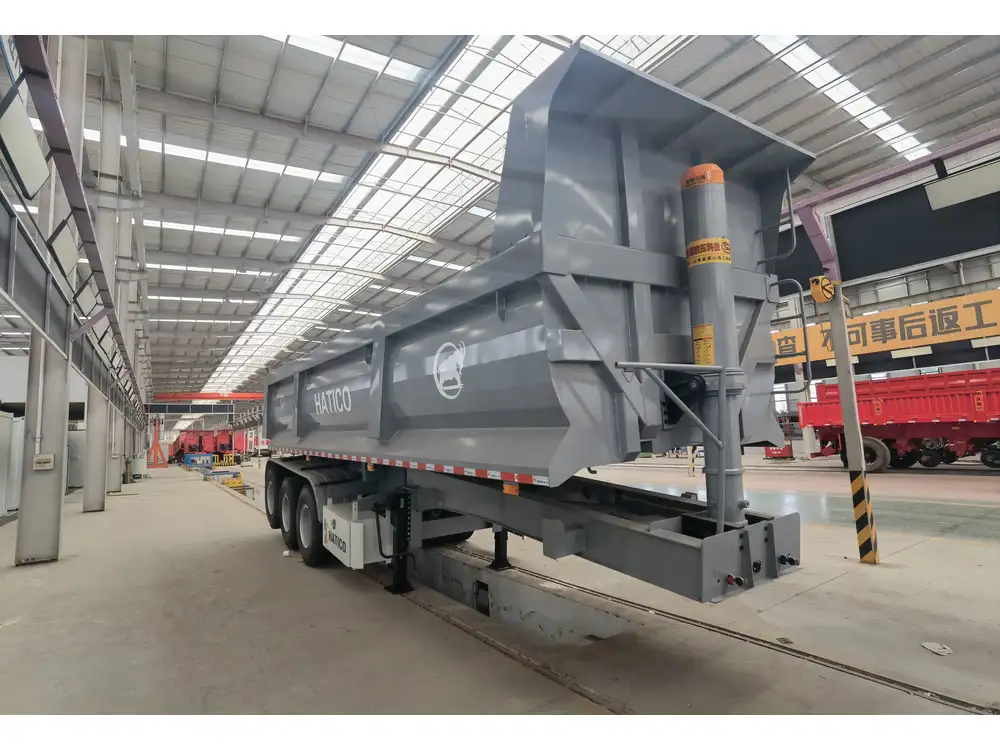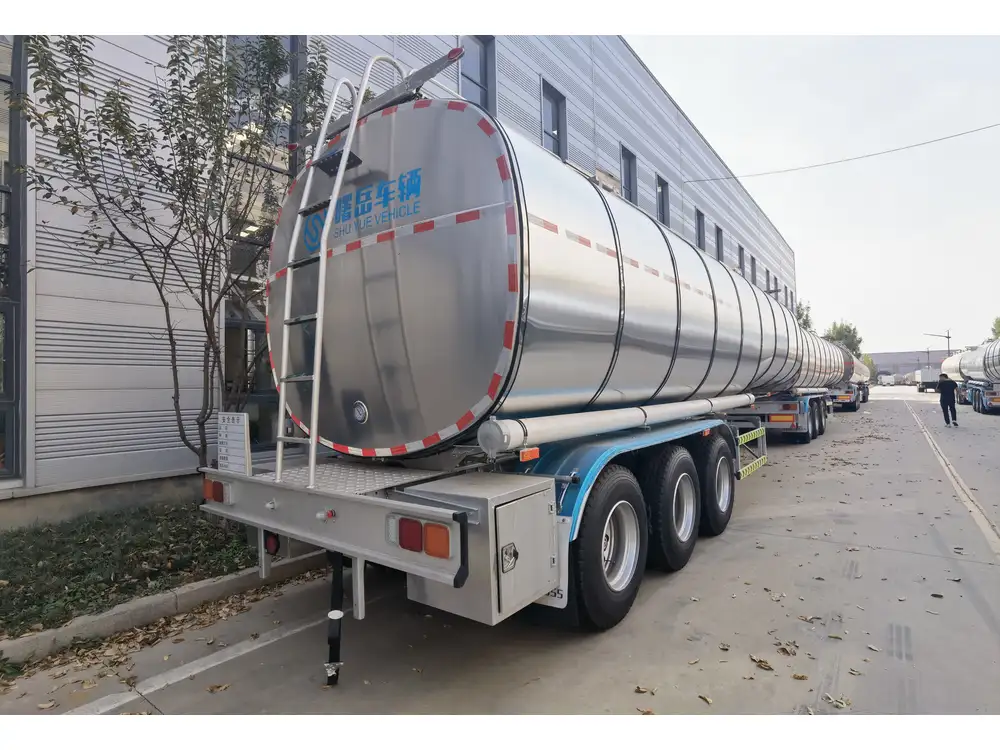When it comes to transporting liquids safely and efficiently, TTT (Tri-Axle Tank Trailers) represent a significant innovation in the world of semi-trailer technology. These specialized trailers are designed with advanced features that ensure the seamless movement of various liquid materials ranging from water to hazardous substances. This exhaustive guide delves into the intricate details surrounding TTT tank trailers, their benefits, specifications, usage, maintenance, and the market landscape.
What is a TTT Tank Trailer?
A TTT tank trailer, or tri-axle tank trailer, is a type of semi-trailer designed specifically for the transportation of liquids. Unlike standard trailers that may have limited storage capacity, TTT trailers boast enhanced stability and load distribution due to their three axle design. This design not only improves weight management but also facilitates better maneuverability, making them a preferred choice for logistics companies engaged in liquid transportation.
Key Features of TTT Tank Trailers
| Feature | Description |
|---|---|
| Axle Configuration | Equipped with three axles for improved stability and load distribution. |
| Material Construction | Typically made of aluminum or stainless steel for durability and resistance to corrosion. |
| Capacity | Available in various capacities, typically ranging from 3,000 to 11,000 gallons. |
| Pump and Loading Systems | Often outfitted with integrated pump systems for efficient loading and unloading. |
| Safety Features | Includes anti-surge baffles, grounding systems, and emergency shut-off valves to ensure safe transport. |

The Importance of TTT Tank Trailers in Transport Industries
TTT tank trailers are indispensable in various industries, including:
- Chemical Manufacturing: Ensuring safe transport of hazardous and non-hazardous chemicals.
- Food and Beverage: Used for transporting liquids such as juices, milk, and oils that require stringent hygiene standards.
- Agriculture: Transporting fertilizers and pesticides essential for farming operations.
- Construction: Transporting water or liquid concrete mixtures for construction projects.
Understanding which industry efficiently employs TTT tank trailers can give insight into their vital role in the supply chain.
Benefits of Using TTT Tank Trailers
Increased Stability and Safety
With the three-axle configuration, TTT trailers provide enhanced stability, especially when carrying heavy loads. This stability minimizes the risk of tipping or swaying during transport, which can be particularly hazardous when on uneven road surfaces or during inclement weather.

Enhanced Load Capacity
One of the most significant advantages of TTT tank trailers is their improved load capacity. The tri-axle design allows them to carry larger volumes of liquid compared to traditional single or dual-axle designs, making them a more efficient choice for long-haul transportation.
Durability and Longevity
Manufactured from high-quality materials, TTT tank trailers are designed to withstand harsh conditions. Aluminum and stainless steel options resist corrosion, thus prolonging the trailer’s life span and ensuring lower maintenance costs over time.
Versatile Applications
The versatility of TTT tank trailers allows them to be utilized in a myriad of industries, accommodating various types of liquids, including:
- Non-Hazardous Liquids: Water, milk, and food-grade liquids.
- Hazardous Liquids: Acids, caustics, and flammable liquids, requiring specialized safety measures.

Key Specifications to Consider
When selecting a TTT tank trailer, several crucial specifications must be evaluated to ensure that the chosen trailer aligns with your logistical needs:
| Specification | Description |
|---|---|
| Volume Capacity | Trailer capacities typically range between 3,000 to 11,000 gallons. |
| Weight Rating | Ensure the trailer’s gross vehicle weight rating (GVWR) meets your requirements. |
| Axle Type | Choose between standard or air ride axles based on road conditions. |
| Brake System | Air brake systems are standard; however, hydraulic setups are also available. |
| Insulation | Some trailers feature insulation for temperature-sensitive materials. |
Maintenance Guidelines for TTT Tank Trailers
To extend the life of your TTT tank trailer, regular maintenance is imperative. Follow these essential maintenance practices:
Routine Inspections
Regular inspections of the following components can prevent significant issues down the line:
- Structural Integrity: Constantly check for any signs of wear, corrosion, or stress fractures.
- Seals and Gaskets: Inspect for leaks or damaged seals regularly.
- Braking System: Ensure that the brake pads and hydraulic systems are functioning optimally.

Cleaning Procedures
Transporting liquids can often leave residues. Therefore, establishing a stringent cleaning regimen is essential:
- Chemical Residue: Employ appropriate cleaning agents based on the type of liquid previously carried.
- Regular Washes: Conduct thorough washes after transporting food-grade liquids to prevent contamination.
Regulatory Compliance
Understanding and adhering to local laws and regulations such as the DOT (Department of Transportation) guidelines for tank trailers ensures both legal compliance and safety.
Comparing TTT Tank Trailers to Other Designs

TTT vs. BTT (Bi-Axle Tank Trailers)
| Aspect | TTT Tank Trailers | BTT Tank Trailers |
|---|---|---|
| Axle Configuration | Three axles | Two axles |
| Stability | Higher due to additional axle | Moderate stability |
| Load Capacity | Greater load capacity | Limited load capacity |
| Applications | Versatile across industries | Typically for lighter loads |
TTT vs. Specialized Tank Trailers
While TTT tank trailers offer many advantages, specialized tank trailers serve specific purposes, such as:
- Cistern Trailers: Designed for water transportation.
- Liquid Food Grade Trailers: Meet stringent requirements for food safety.
Market Landscape of TTT Tank Trailers
The demand for TTT tank trailers continues to rise, given the growing industries reliant on liquid transportation. This growth is bolstered by:
- Global Trade Expansion: Increased cross-border trade elevates the need for effective transportation solutions.
- Environmental Regulations: Stricter regulations regarding hazardous material transport enhance the necessity for safe and reliable tanking solutions.

Leading Manufacturers and Competitors
Identifying leading manufacturers within the market can aid consumers in making informed purchasing decisions. A few notable brands include:
- Great Dane: Known for innovative designs and extensive product range.
- Fruehauf: Offers customizable tank trailers tailored to specific requirements.
- Polar Corporation: Renowned for durable and high-performance tank trailers.
Innovations and Future Trends
The tank trailer market is experiencing innovation driven by technology. Key trends shaping its future include:
- Smart Technologies: Integration of GPS and telematics for real-time monitoring and fleet management.
- Sustainability Initiatives: Development of eco-friendly materials and designs aimed at reducing carbon footprints.
Conclusion: The Future of TTT Tank Trailers
In the realm of liquid transportation, TTT tank trailers exemplify an important evolutionary step towards more efficient, safer transportation solutions. Whether addressing the pressing demands of various industries or navigating regulatory landscapes, TTT trailers stand at the cutting edge of innovation. By understanding their features, benefits, and maintenance requirements, operators and manufacturers alike can ensure streamlined operations and enhanced safety in their logistics networks.
Through this comprehensive exploration of TTT tank trailers, we elucidate the complexities surrounding this essential component of modern transportation logistics, aiming to arm our audience with the knowledge necessary to make informed decisions in their procurement and operational strategies. As the industry evolves, remaining informed about technological advancements and regulatory changes will be essential for success.



